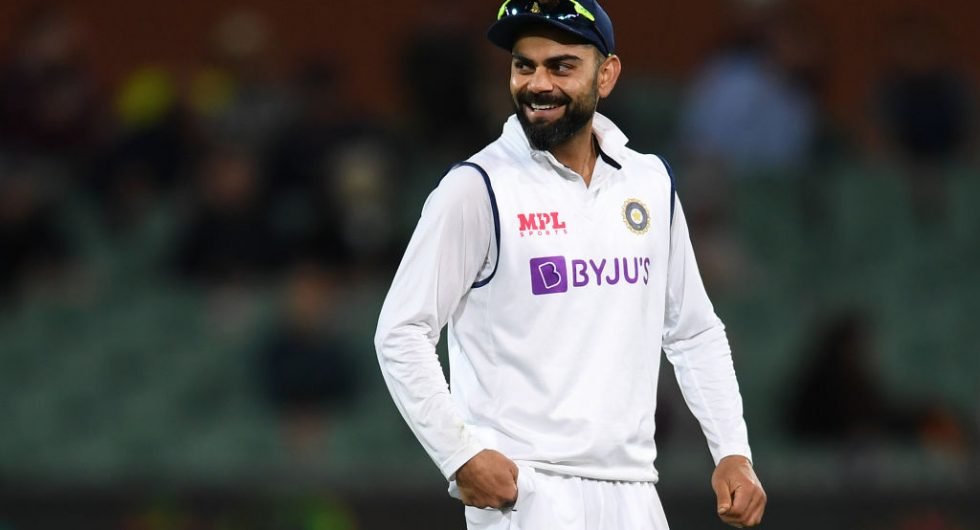The Kohli effect: How MS Dhoni’s Test side was transformed into world beaters

 by Sarah Waris
by Sarah Waris
@swaris16 5 minute read
The Indian Test side has been on a roll ever since Virat Kohli took over the leadership role from MS Dhoni. The former, whose priority towards Test cricket can never be questioned, has ensured that the side has reached the pinnacle, writes Sarah Waris.
When Kohli decided that his team would go for the target of 364 that had been set in the first Test at Adelaide in 2014, Indian fans were mightily surprised — and dare I say, pleased. For years, the Test team from the country had floated between the extraordinary and below-par overseas, though successes in India had been plenty. Kohli, who was leading India in Adelaide after an injury to Dhoni, took his hyperactivism as a batsman and unleashed it in the run-chase that eventually slipped away from India. However, the 48-run loss was a precursor for things to come, as the Delhi player has led the Test team with fervent energy that has seen India scale heights.
Under Dhoni, India won just six of the 30 matches they played overseas, including losing 15. Only Pakistan lost more matches overseas in the interim when Dhoni was the captain of the Indian Test side — from 2009 to 2014. Of the six wins overseas, one each were registered against Bangladesh, West Indies and Sri Lanka. The MS Dhoni-led side did not win a single game in Australia.
Kohli, on the other hand, has tasted better success, with 15 overseas wins since he took over as skipper. No other team has a better away record ever since he was asked to lead, and with India’s win/loss ratio of 1.153 — the best in the world — it would not be a hyperbole to suggest that he has played a huge role in Test cricket’s progression.
A focus on improving fitness standards
Kohli, who has emphasized how the “process “ to make India the numero uno team in Test cricket started the day since he took over the job, has shown the way with stringent fitness standards, that have, in turn, rubbed off on the rest of the players. A quickly run triple when the skipper was batting on 232 against South Africa in 2019 only displayed his stamina, which remains a direct result of the hours that he spends in the gym.
Focusing on drills that help in endurance, strength, power, agility, flexibility and conditioning along with running and core strengthening not only helps a player excel on the ground but allows them better recovery time, thus reducing the injuries in the sport. In an age where only the top players are selected to represent their respective countries, the differentiating factor, often, becomes fitness. The rise in fielding standards, the tough schedule and the advent of T20 cricket, where the player should always have an eye on taking a quick run, has made fitness a crucial factor in the success. Despite all the criticism that the management gets for dropping players for failing the yo-yo test, Kohli’s benchmark has enabled India to field a XI that can put their body on the line without fear, which has played its own part in the side’s rise.
The importance of playing five bowlers
“It’s the bowlers who are going to win you Test matches, as simple as that. If you don’t take 20 wickets, you can have an average of 55, it doesn’t matter. These small contributions and team winning are more important than having an average of 50 and above and bowlers not being able to take wickets,” Kohli had stated way back in 2015 during the home Test against Sri Lanka.
This statement, which has meant that India have often taken the field with five bowlers, displays a huge shift from how Dhoni viewed the Test team. During the infamous Test series against England in the UK that India lost 0-4, Dhoni fielded four specialist bowlers game-after-game, which often meant that part-timers such as Sachin Tendulkar, Suresh Raina, Yuvraj Singh, and Dhoni himself, took turns to bowl when they tired out.
Under Dhoni, a total of 15 pacers sent down 3,259.3 overs away from home, with Ishant alone bowling over 1,071 overs. Zaheer Khan sent down 512.5 overs, while Mohammad Shami bowled 327.5 overs in Tests under Dhoni when not playing in India, with only two other fast bowlers (Praveen Kumar and S Sreesanth) bowling over 200 overs under him. While the numbers indicate the massive workload that existed on the three premier pacers, it also highlights the small pool of reliable players that were at his disposal.
Kohli has massively changed the outlook towards fast bowling, as increased fitness levels and focus on giving chances have meant that India can still be counted as favourites even after an experienced pacer is injured. The bowling duties have been equally divided between Shami, Ishant and Jasprit Bumrah, with Umesh Yadav too not lagging behind. Just six pacers have played under him — Mohammad Siraj and Shardul Thakur are yet to play a game under him overseas — which in turn has allowed them to play with more freedom.
The current captain remains vocal about his love for the format, recently even calling Tests the “heartbeat of cricket.” His own determination to excel in the format has combined wonderfully with India’s rise after it faced a roadblock for the first half of the decade. Though India are yet to win a series in England and South Africa under Kohli, they came close last time, and if they can go the distance this year, this team led by the ferocious skipper would have created an envious legacy.
Subscribe to the Wisden Cricket YouTube channel for post-match awards, player interviews, analysis and much more.

